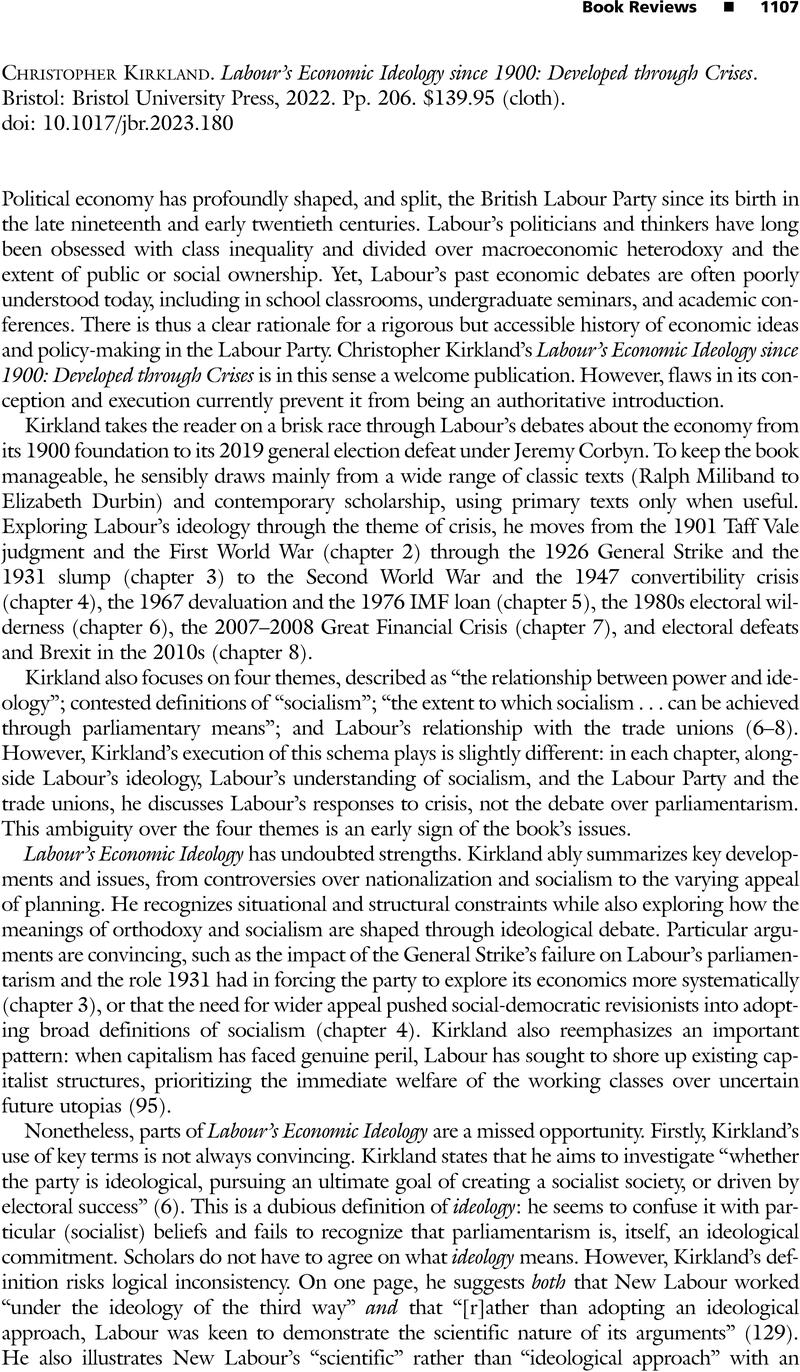No CrossRef data available.
Article contents
Christopher Kirkland. Labour's Economic Ideology since 1900: Developed through Crises. Bristol: Bristol University Press, 2022. Pp. 206. $139.95 (cloth).
Review products
Christopher Kirkland. Labour's Economic Ideology since 1900: Developed through Crises. Bristol: Bristol University Press, 2022. Pp. 206. $139.95 (cloth).
Published online by Cambridge University Press: 19 February 2024
Abstract
An abstract is not available for this content so a preview has been provided. Please use the Get access link above for information on how to access this content.

- Type
- Book Review
- Information
- Copyright
- Copyright © The Author(s), 2024. Published by Cambridge University Press on behalf of The North American Conference on British Studies



